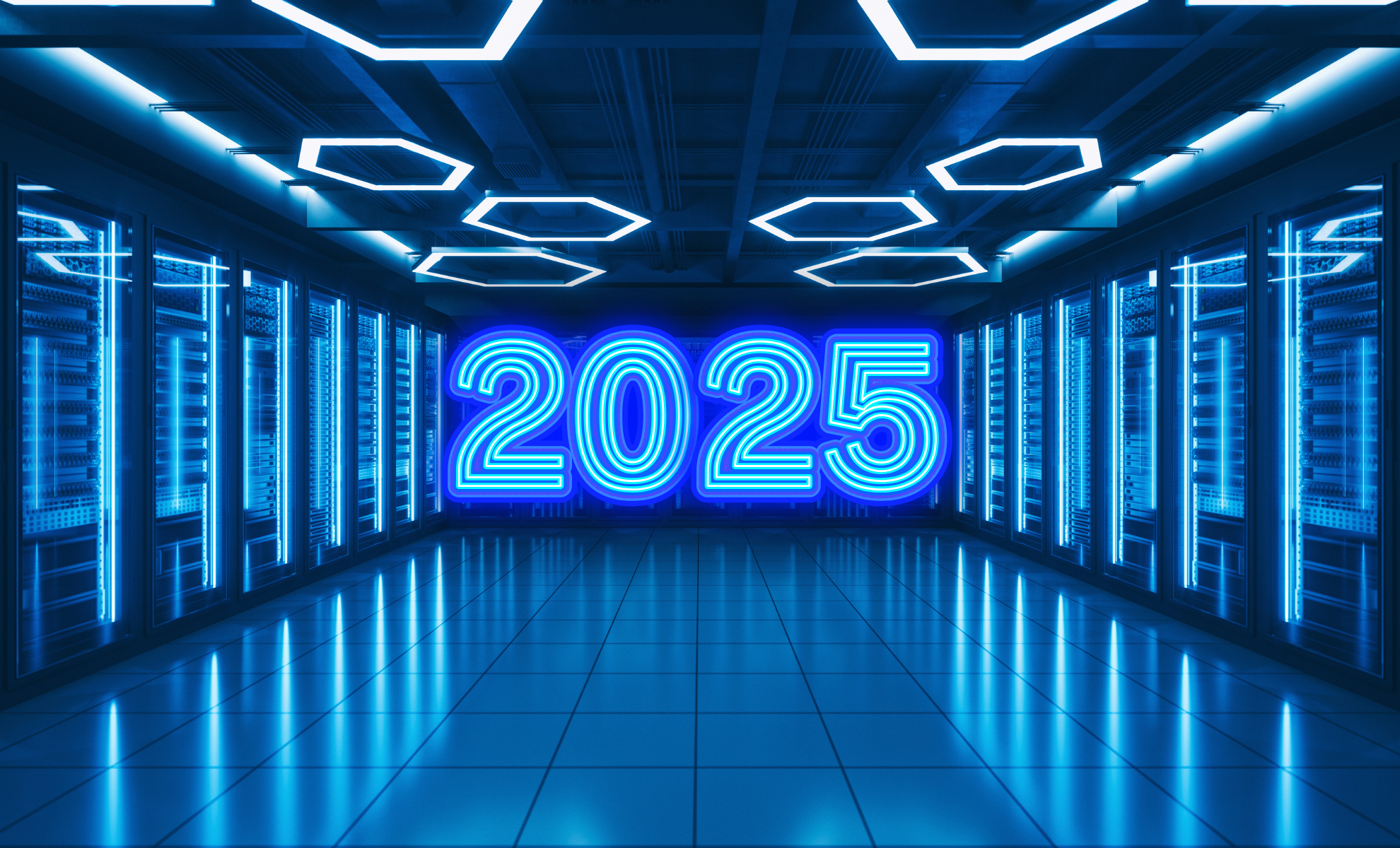
Top Trend predictions For 2025
As we prepare to step into 2025, the data centre landscape continues to evolve at an unprecedented pace, driven by advancements in technology, sustainability imperatives, and the growing demand for resilient digital infrastructure. From the rise of AI to innovative cooling solutions, the trends shaping this year reflect a dynamic interplay between efficiency, scalability, and environmental responsibility.
In this blog, we explore the key trends set to define the data centre industry in 2025.
1. Operators will be forced to settle for “second best” data centre components amidst the rush for AI-ready infrastructure – this will leave many with outdated equipment by year’s end.
The rush to build AI-ready infrastructure is pushing some operators to compromise on equipment. Long lead times for critical components with some lead times exceeding two years—are forcing many to use older or less optimal technology just to stay on schedule. While this avoids immediate delays, it sets operators up for future challenges as AI workloads demand top-tier performance. By the end of 2025, retrofitting nearly new hardware will become common, driving costs higher and disrupting operations. To mitigate this, operators should prioritise quality cabling and long-term optimisation strategies to extend the life of their equipment.
2. Insatiable Data Centre demand is leading to tighter construction deadlines and increased health and safety risks
Accelerated timelines for Data Centre construction, driven by AI demand, are raising health and safety concerns. Operators are under pressure to deliver larger projects faster, often resorting to 24/7 construction schedules. However, the shortage of skilled workers may increase the potential for incidents. To negate this risk the industry must balance speed with safety by setting realistic timelines, enhancing training programs, and resisting the urge to cut corners. Collaboration between educational institutions, industry leaders, and governments is crucial to address the skills gap and improve worker safety.
3. Emerging markets will experience major growth in 2025 as FLAP-D markets face power and land constraints
Power shortages and stricter regulations in FLAP-D markets are shifting growth opportunities to emerging regions. Countries like Spain, Italy, and the Nordics are fostering favourable regulatory environments and AI strategies to attract investment. For instance, Italy now recognises Data Centres as critical infrastructure, while Nordic countries emphasise renewable energy use to support their expansion. These regions are positioned to meet growing AI demands and emerge as major players in the data centre industry, challenging traditional market dominance.
4. Despite nuclear’s promise, 2025 will see a stronger shift toward renewables to meet urgent energy demands
AI’s skyrocketing energy demands are pushing beyond current grid capacities. To sustainably meet these demands, the energy grid must diversify. Despite Google and Microsoft’s plans to purchase nuclear power, with Google targeting 2030 and Microsoft 2028, nuclear power remains years away from impactful deployment. It’s not the ‘quick fix’ it appears to be – whereas renewables will be. While nuclear power offers a carbon-free solution, its long timelines and complex regulations make it a slow-to-scale option. Instead, renewable energy sources like wind, solar, and hydropower are stepping up as accessible alternatives. Data Centres are also adopting innovative practices, such as repurposing waste heat and feeding power back to grids, helping stabilise energy supplies while advancing sustainability goals.
5. Operators will start to think carefully about who they partner with
The AI boom has attracted significant venture capital, creating a surge in demand from AI startups. However, these companies can operate on unstable funding, leading to project delays or cancellations if budgets run out. To avoid financial risks, operators must conduct thorough due diligence and carefully assess customer stability before committing to partnerships. This cautious approach will be essential as the market becomes increasingly volatile and ensure they don’t get stuck with the bill if customers run out of cash.
Conclusion
As AI continues to reshape the digital landscape, the data centre industry continues to face both significant opportunities and complex challenges in 2025. From supply chain constraints and safety risks, to the rise of new markets and a shift toward renewables, operators must adapt to rapid changes while planning for long-term resilience.
At Onnec, we’re committed to helping our partners navigate these challenges by delivering innovative, future-ready solutions. Whether it’s through high-quality cabling, or strategic project delivery, we enable data centres to thrive in an evolving market. The decisions made today will shape the future of data centres—and the digital world they support—and Onnec is here to ensure that future connections are built on a strong foundation.


